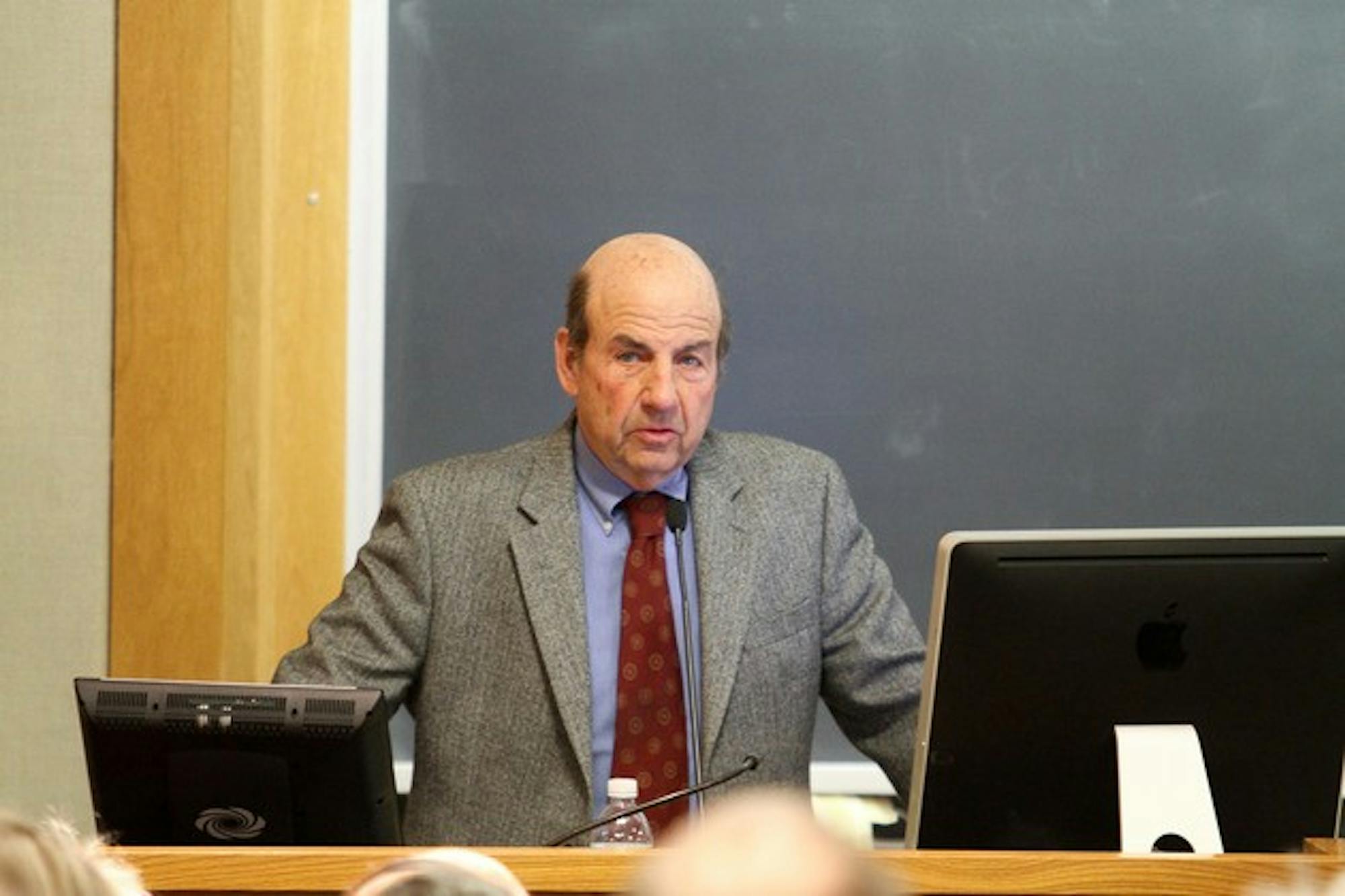Originally a political writer for publications such as Time Magazine and The New Yorker, Trillin said his interest in food "can be traced to a matter of self defense."
"I would be in a different city every three weeks, usually for the first time," Trillin said. "People would recommend a fabulous restaurant with a paragraph of description for every item, telling you what it would sound like when it sizzled on your plate. What the paragraph didn't mention was that the poor beast had been frozen eight months before it happened."
Trillin said he developed a strategic plan to identify quality food in new locations.
"If all else failed, I would go up to the motel clerk and grab him by the necktie and pull him over the counter," he said. "I would ask him for not the place he took his parents for their 25th anniversary, but the place where he went the first night he got home from 13 months in Korea the second one usually got a better response."
Local cuisine was often marginalized during the middle of the 20th century, according to Trillin.
"In the 1960s, people were sort of ashamed of the stuff they actually liked to eat," he said. "I used to make it sort of a rule that I would only eat local specialties and the cooking of ethnic groups strong enough to have two aldermen."
In the era before modern American cuisine, food quality "varied in inverse proportion to the exclusivity of the club," according to Trillin.
"If you went somewhere and were served Velveeta Cheese on Wonderbread with the crust cut off, you were in a very fancy place," Trillin said. "Oregano, garlic and salts were associated with the type of people they were trying to keep out of the club, so in the end you can't taste a thing."
The rise of modern American food culture can be traced to a renewed focus on local cuisine after the 1960s, Trillin said.
"People at some point started taking more interest in their homeground and were less apologetic about it," he said. "Someone in Philadelphia was less worried about taking you to the local Philly Cheese place."
The power of local eating can be seen at the national level when the White House menus change after different presidents are inaugurated, often inspiring different types of cuisine in the surrounding area, according to Trillin.
"When Lyndon B. Johnson was in office, there was barbecue all over Washington," Trillin said. "The place was covered in a smoky haze it looked like the British had returned."
At that point, American cuisine started to take on an identity separate from European influences, Trillin said.
"In America, being a chef had always been thought of as a blue-collar job, but once people started being inventive about restaurants and no longer copying European style, America got its own cuisine," he said. "These chefs wore baseball hats instead of a high toque - they were American."
The influence of these new culinary trends expanded beyond chefs to the greater American public, Trillin said.
"Before 1967, no one could name an American chef, but they started to become more household names," he said. "Food started having a hint of this and a bit of that."
The end of American immigration policies that favored the United Kingdom and Northern Europe while excluding Asian immigrants was also a turning point for American flavors, according to Trillin.
"Maybe [the United States] actually believed that citizens who ate bland food make better citizens, but I don't agree," he said. "It's probably wrong to compare food to involuntary servitude, but the [Immigration and Nationality Act of 1965] was our Emancipation Proclamation."
Though American cuisine has progressed considerably in recent years, holiday food still remains an unpleasant relic of the past, according to Trillin. He said that given the way in which Puritan food was prepared, it is not surprising that dishes did not have a lot of flavor.
"Puritan girls had to boil the vegetables for at least a month in case one of the guests showed up without his teeth," he said.
While the lecture was entertaining, "the average Dartmouth student" may not have found it relatable, according to Daniel Leder '14.
"I liked the talk and thought [Trillin's] speaking skills surpassed a lot of other lecturers," he said. "I think a more experienced listener would have understood more of the references and taken more from the talk."
Trillin's lecture was the first installment in the three-part Winter 2011 Montgomery Endowment Lecture Series on food. The Montgomery lecture series will also feature Random House editor-at-large Ruth Reichl and Dan Barber, the founder and chef of the restaurant Blue Hill in Greenwich Village. Reichl's lecture will take place on Feb. 8, while Barber will deliver his presentation on Feb. 22.




